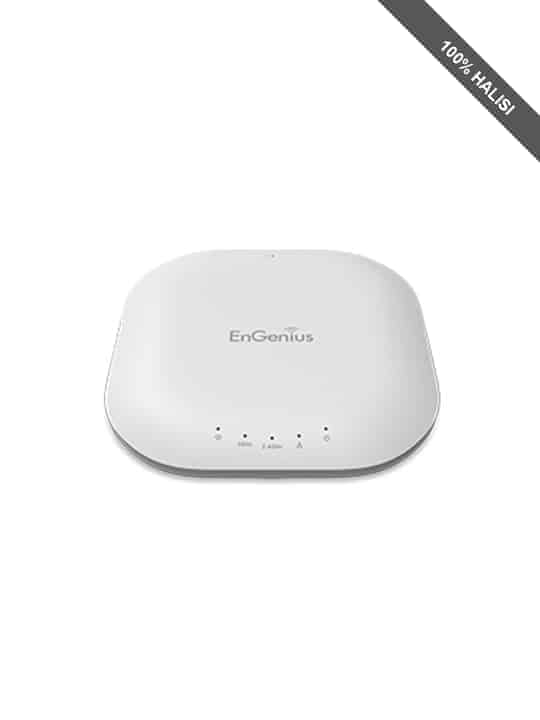RF:
2.4 and 5 GHz Frequency Bands
Standard:
IEEE 802.11a/b/g/n
Radio I:
11b/g/n: 2.412~2.484 GHz
Radio II:
11a/n: 5.18-5.24 and 5.26-5.32 and 5.5-5.7 and 5.745-5.825 GHz
Data Rate:
Up to 300 Mbps in both frequency bands
Memory:
64MB
Flash Memory:
16MB
Antenna:
Four (4) Internal 5 dBi Omni-Directional Antennas
Physical Interface:
1 x RJ-45 Gigabit Ethernet (10/100/1000 Mbps) – PoE capable
1 x Reset Button
1 x Power Connector
Power Supply:
100 to 240 VDC ± 10%, 50/60 Hz
(depends on different countries)
Active Ethernet (Power-over-Ethernet, IEEE 802.3at/af)
Power Adapter (United States) 48VDC/0.375A
Device: 12V/2A
OFDM:
BPSK, QPSK, 26-OAM, 64-QAM, DBPSK, DQPSK, CCK
Operating Channels:
2.4 GHz: US/Canada 1-11
5 GHz: Country dependent for the following ranges:
36, 40, 44, 48, 52, 56, 60, 64, 100, 104, 108, 112, 116, 120, 124, 128, 132, 136, 140, 149, 153, 157, 161, 165
Operation Modes:
Access Point
Multiple BSSID:
Supports up to 8 BSSIDs per radio
LAN:
IP (check validity and DHCP server IP range) MAC
SSID-to-VLAN Tagging:
Supports 802.1q SSID-to-VLAN tagging
Spanning Tree:
Supports 802.1d Spanning Tree Protocol
Wireless Mode:
11a/11b/11g/11n
Channel selection (settings vary by country)
Channel bandwidth (Auto, 20 MHz, 40 MHz)
QoS:
WMM (Wireless Multimedia)
Wireless Management Features (with Neutron Series Switch):
Access Point Auto Discovery and Provisioning
Access Point Auto IP Assignment
Access Point Cluster Management
Remote Access Point Rebooting
Access Point Device Name Editing
Access Point Radio Settings
Band Steering
Traffic Shaping
Fast Handover
Seamless Roaming (requires RADIUS server)
Access Point Client Limiting
Wireless Security (WEP, WPA/WPA2 Enterprise, WPA/WPA2 PSK)
VLANs for Access Point- Multiple SSIDs
Guest Network
Access Point Status Monitoring
Wireless Client Monitoring
Wireless Traffic & Usage Statistics
Visual Topology View
Floor Plan View
Map View
Secure Control Messaging
SSL Certificate
Local MAC Address Database
Remote MAC Address Database (RADIUS)
Unified Configuration Import / Export
Bulk Firmware Upgrade Capability
Intelligent Diagnostics
Tx Power Control:
Adjust transmit power by dBm
Configuration:
Web-based configuration (http)
Firmware Upgrade:
Via web browser, settings are reserved after upgrade
Administrator Setting:
Administrator Username and Password Change
Reset Setting:
Reboot (press and hold for 2 seconds).
Reset to factory default (press and hold for 10 seconds)
System Monitoring:
Status Statistic and Event Log
SNMP:
V1, V2c, V3
MIB:
MIB I, MIB II (RFC1213) and private MIB
Traffic Shaping:
Incoming and outgoing wireless traffic shaping
Auto-channel Selection:
Automatically selecting least congested channel
Bandwidth Measurement:
IP range and bandwidth management
Auto Reboot:
Reboot Access Point by minute, hour, day, or week
Backup and Restore:
Save and restore settings through Web interface
CLI:
Supports Command Line Interface
Diagnosis:
IP pinging statistics
Log:
SysLog and Local Log support
LED Control:
On/Off
AP Detection:
Scanning for available EnGenius APs
Wireless Security:
WPA/WPA2 Personal (WPA-PSK using TKIP or AES)
WPA/WPA2 Enterprise (WPA-EAP using TKIP)
802.1X RADIUS Authenticator: MD5/TLS/TTLS, PEAP
SSID broadcast enable/disable
MAC Address Filtering, Up to 50 field
L2 Isolation (Access Point mode)
QoS:
(Quality of Service) WMM (Wireless Multimedia)
Temperature Range:
Operating: 0 to 50ºC (32º to 122ºF)
Operating humidity: 0 to 90º
Storage temperature: -20ºC to 60ºC (-4Fº to 140ºF)
Humidity (non-condensing):
Operating: 90% or less
Certifications:
FCC, IC
Weight:
363 g.
Diameter:
16.5cm
Height:
4.2cm
Package Contents:
EWS310AP Dual Band N600 Indoor Access Point
12V/2A Power Adapter
T-Rail Mounting Kit
Ceiling Mount and Wall Screw Kit
Mounting Bracket
RJ-45 Ethernet Cable
Quick Installation Guide











